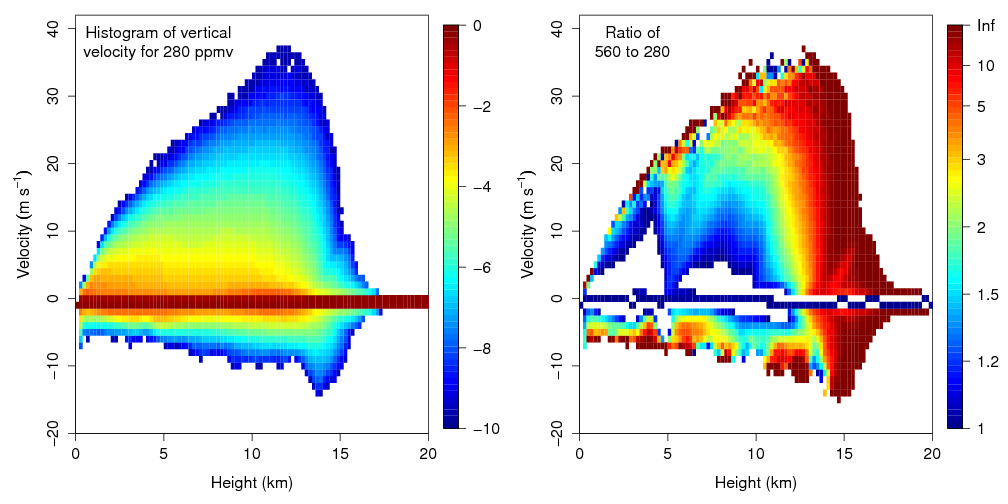Romps, Response of tropical precipitation to global warming, JAS, 2011
Paper
Description
This paper presents the first high-resolution (200-m grid spacing) cloud-resolving simulations of global warming. The focus of this study is on changes to precipitation fluxes as CO2 is increased. While GCM studies have concluded that tropical convection will become less vigorous as the climate warms, this study -- which resolves convection -- reaches the opposite conclusion.
The simplest prediction for precipitation extremes is that they will grow in intensity in proportion to the amount of water the air can hold; this is the theory of Clausius-Clapeyron (CC) scaling. But, there are many properties of clouds (such as their velocities) that could change as the atmosphere warms, not just the amount of water they hold. If these other properties change sufficiently, then precipitation extremes could deviate from CC scaling.
In this paper, a simple theory is developed that predicts the changes in cloud properties that would be consistent with CC scaling. In the cloud-resolving simulations, the precipitation fluxes are found to become 20% more intense with a doubling of CO2, in agreement with CC scaling. Furthermore, convective clouds are found to change in accordance with the simple theory. Overall, increases in CO2 lead to more vigorous convection, comprised of clouds that are wider, taller, and faster.
When the concentration of CO2 is doubled, convective velocities increase. On the left is the histogram of velocities in the 280-ppmv case. On the right is the ratio of the 560-ppmv histogram to the 280-ppmv histogram.
